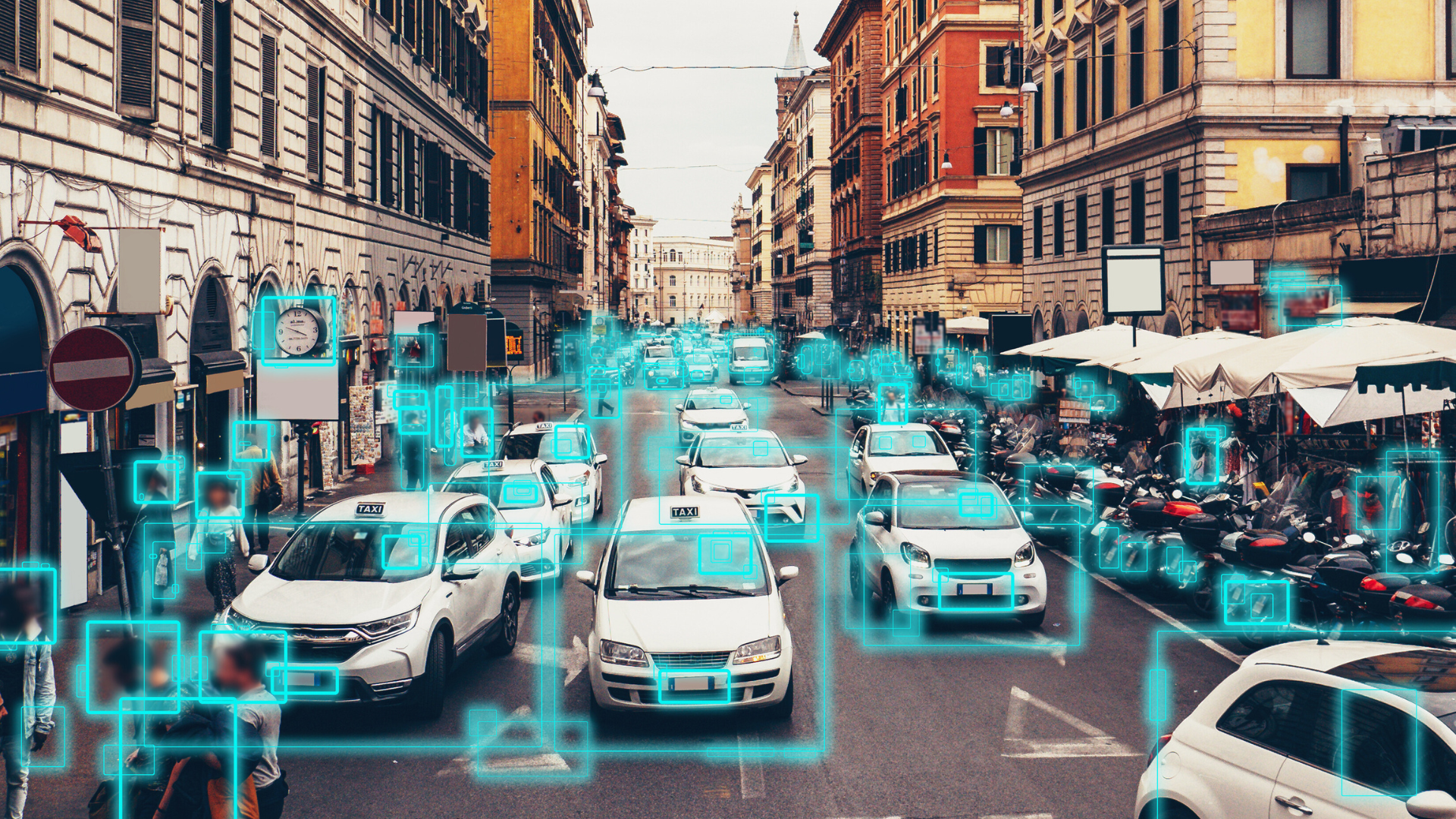

The integration of AI into the Internet of Things (IoT) is transforming urban environments into smarter cities. This combination enhances efficiency, improves public services, and promotes sustainable living. By utilizing data collected from connected devices, cities can optimize everything from traffic management to energy consumption, leading to a more streamlined urban experience.
As cities worldwide face increasing challenges like overcrowding and resource depletion, leveraging AI with IoT offers innovative solutions. For instance, smart sensors can monitor air quality and traffic patterns, allowing for real-time adjustments to infrastructure and services. This dynamic approach not only enhances the quality of life for residents but also contributes to environmental sustainability.
The future of urban living hinges on this technological integration, allowing for more responsive governance and smarter resource management. Embracing AI within IoT frameworks provides a roadmap towards developing adaptable, efficient, and resilient cities that cater to the needs of their citizens.
AI and IoT Integration: Transforming Urban Infrastructure
Integrating artificial intelligence with the Internet of Things significantly enhances urban infrastructure. This combination fosters intelligent data collection, real-time processing, and mitigates challenges associated with system integration and security.
Connecting Sensors and Devices for Intelligent Data Collection
The integration of AI with IoT relies heavily on sensors and connected devices to gather data efficiently. These IoT sensors collect real-time information regarding traffic patterns, environmental conditions, and energy consumption.
By employing edge computing, data can be processed locally, minimizing latency. For example, smart traffic lights adjust their timings based on immediate traffic flow. This approach leads to better traffic management and reduced congestion.
AI systems facilitate the analysis of vast amounts of data generated by these sensors. They identify patterns and anomalies, enabling more informed decision-making for urban planners and local authorities.
Real-Time Data Processing and Decision-Making
Real-time data processing is crucial for smart city infrastructure. AI applications can analyze incoming data streams from various sources, allowing cities to respond quickly to emerging issues.
For instance, smart waste management systems use AI to optimize collection routes based on fill levels monitored by sensors. This not only improves efficiency but also reduces operational costs.
Furthermore, data processing capabilities support predictive analysis, enabling cities to foresee maintenance needs for public infrastructure. By predicting potential failures, they can proactively address issues, ensuring smoother urban operations.
Challenges in System Integration and Cybersecurity
Despite its advantages, integrating AI with IoT faces significant challenges. One of the primary concerns is cybersecurity. The increased connectivity of devices heightens vulnerability to cyber threats.
Urban infrastructures must implement robust security measures to protect sensitive data and connected systems. Encryption, regular software updates, and secure communication protocols are essential for safeguarding against breaches.
Another challenge lies in interoperability among different systems and devices. Standardizing protocols will streamline integration efforts and enhance the effectiveness of AI systems in various urban applications. Addressing these challenges is critical for the successful deployment of smart city initiatives.
Enhancing City Operations and Citizen Services
Integrating AI into IoT facilitates improved efficiency in urban operations and enhances citizen services. This integration addresses critical challenges in transportation, public safety, energy management, and resource management.
Optimizing Traffic Management and Urban Mobility
AI-driven IoT solutions can significantly enhance traffic management. For instance, real-time data analysis allows traffic signals to adapt to current traffic conditions, reducing congestion.
Smart transportation systems can optimize public transport schedules based on demand patterns. This can lead to better service availability and reduced wait times for commuters.
Furthermore, AI can predict traffic flow, enabling more informed city planning. Utilization of historical data assists in identifying congestion hotspots, allowing for proactive measures to ease urban mobility challenges.
Improving Public Safety and Emergency Services
AI enhances public safety through advanced surveillance systems integrated with IoT devices. Cameras equipped with AI can identify unusual activities, triggering alerts for quick responses from law enforcement.
Emergency services benefit from AI by optimizing response times. IoT devices can analyze traffic and road conditions in real time, directing emergency vehicles through the fastest routes.
Additionally, predictive analytics can help in identifying crime-prone areas, allowing for better deployment of resources. This strategic allocation enhances community safety and fosters a sense of security among citizens.
Supporting Energy Management and Smart Grids
AI plays a crucial role in managing urban energy needs through smart grids. These grids use IoT sensors to monitor energy consumption patterns, enabling cities to optimize energy distribution based on demand.
By integrating renewable energy sources, cities can maintain a balance between supply and demand more effectively. AI algorithms predict energy usage trends, facilitating informed decisions on resource allocation.
This energy management approach not only reduces costs but also contributes to sustainability goals. Accurate forecasting helps in minimizing energy waste and supports the transition to greener urban energy systems.
Streamlining Waste and Water Management
AI and IoT applications significantly enhance waste management practices. Smart bins equipped with sensors can monitor fill levels, optimizing collection routes and schedules.
This reduces operational costs while improving service frequency. Real-time data collection on waste generation patterns can inform recycling initiatives and waste reduction strategies.
In water management, IoT sensors provide insights into consumption and leakage detection. Predictive maintenance can address potential issues before they escalate, promoting efficient water resource management and conserving this vital resource for urban populations.
Driving Urban Innovation and Sustainability
Integrating AI into the Internet of Things (IoT) drives urban innovation and supports sustainable practices. This integration enhances city management through efficient predictive analytics, environmental monitoring, and optimized resource allocation.
Applying Predictive Analytics and Predictive Maintenance
Predictive analytics leverages data to forecast equipment failures and maintenance needs, significantly improving city infrastructure sustainability. For instance, sensors on public transport systems can identify wear in real-time. This foresight allows cities to perform timely maintenance, reducing downtime and repair costs.
Predictive maintenance models analyze data from various sources, enabling cities to extend the lifespan of assets. As a result, urban areas can effectively allocate budgets toward vital services, meeting the needs of residents. By minimizing emergency repairs, cities can direct funds towards innovative projects, enhancing the quality of life.
Promoting Environmental Monitoring and Pollution Reduction
AI-enhanced environmental monitoring systems collect data on air and water quality, offering valuable insights for pollution reduction. These systems can deploy sensors across urban landscapes to monitor critical parameters like carbon emissions and particulate matter levels.
Real-time data enables immediate responses to pollution spikes, fostering a healthier urban environment. Cities can use this information to enforce regulations and promote sustainable energy sources. Integrating renewable energy solutions further contributes to pollution reduction and supports climate change mitigation efforts.
Boosting Resource Allocation and Efficiency
AI-driven analytics improve resource allocation by identifying inefficiencies within city operations. For example, smart waste management systems use data to optimize collection routes, reducing fuel consumption and emissions.
Effective resource allocation ensures that city services, such as water and energy, are utilized efficiently. Intelligent grid systems can predict demand fluctuations, aligning resource distribution with consumption patterns. This enhances urban efficiency and promotes environmental sustainability, ensuring cities can adapt to changing needs while maintaining a high quality of life.
Fostering Citizen Engagement and Digital Transformation
Integrating AI into IoT systems can significantly enhance citizen engagement and spur digital transformation in urban settings. By creating transparent communication channels, leveraging digital twins, and promoting accountability, cities foster a more inclusive environment for their residents.
Empowering Participation and Transparency
AI-driven IoT platforms can create avenues for citizen engagement by facilitating direct communication between the public sector and residents.
- Digital platforms allow residents to voice opinions on urban development projects, ensuring their needs are met.
- Real-time data from IoT devices ensures that decisions are made transparently, building trust in local governments.
This approach empowers citizens by letting them actively participate in city planning and decision-making processes, leading to better-aligned public services.
Enabling Digital Twins and Remote Monitoring
Digital twins provide a virtual representation of physical city assets, enabling real-time monitoring and analysis.
- This technology allows urban planners to simulate different scenarios, leading to informed decisions that reflect community needs.
- Remote monitoring capabilities can track everything from traffic flow to environmental conditions, providing data-driven insights.
Citizens can access this information, increasing awareness and fostering more informed discussions around urban challenges. This transparency drives collaboration between stakeholders and engages the public more effectively.
Ensuring Accountability, Inclusivity, and Accessibility
Integrating AI into IoT not only streamlines operations but also enhances the accessibility of city services.
- Inclusive technology must be designed to cater to all demographics, ensuring that even marginalized groups can participate in civic life.
- By using AI analytics, cities can identify gaps in service delivery and address inequalities, improving outcomes for every resident.
Accountability is further strengthened as citizens can monitor city initiatives, fostering a sense of ownership in their communities. Enhanced accessibility leads to broader citizen participation and alignment with urban development aims.
